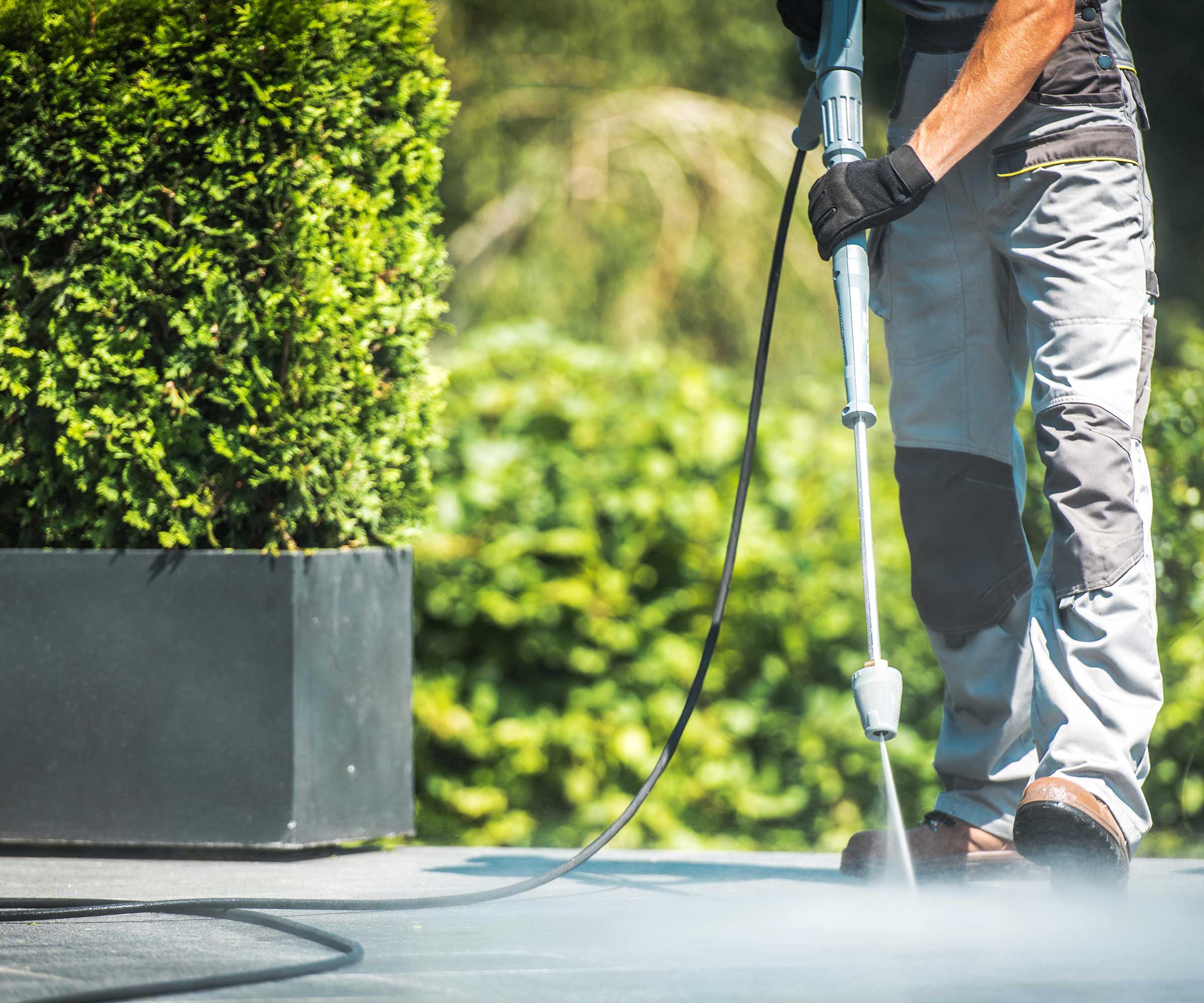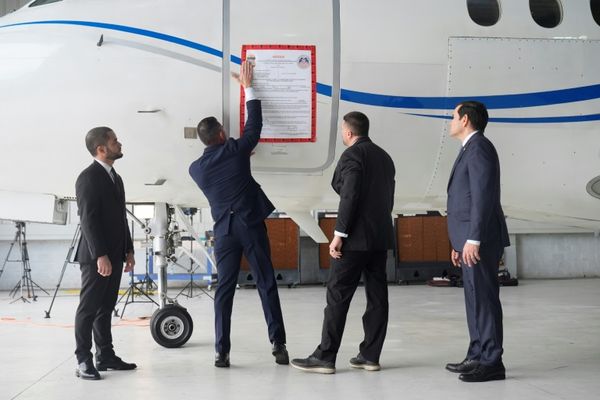
Pressure washers are one of the most satisfying appliances around. There's nothing like blasting grime off a paving slab, and revitalizing a garden with hardly any effort.
However, there's lots that can go wrong with a pressure washer. Having tested more than my fair share of these appliances, I sometimes spend more time repairing the plumbing on these models than cleaning my patio.
I spoke to an expert on pressure washers about eight things that can go wrong - and the easy fixes for every problem.
1. Check the hose

One of the most common reasons a pressure washer breaks is that there's a kink in the hose. These are usually obvious, but there can be a tiny kink somewhere along the length of the hose that you've missed. Though it seems like a small issue, pressure washer expert Nathan Cord says 'Kinks in a high-pressure hose can block water flow inside the hose, which affects the performance of the high-pressure washer and may even cause damage to the hose.'
Thankfully, this is easy to fix. Turn off the machine and unplug it from the power and water supply. Then, lay the hose flat and gently work out the kinks. Nathan warns not to twist or pull the hose as this may make the problem worse.
If your hose still won't unkink, Nathan gave me another trick. 'If it's an extremely stiff hose, take it out in the sun or pass some warm water through it to soften it. That way, it will be more flexible.'
Both of the above should fix the kinks and get the machine working again. To prevent it from happening again, make sure the hose is loosely coiled on the pressure washer hook. If you coil it up too tightly you can cause kinks.
2. Unclog the nozzle

Another common issue is that the nozzle of the pressure washer is clogged with mud or dirt. If you've been pressure washing near flower beds or leaned the nozzle in the grass, this can easily happen. Thankfully, this is another simple fix. Turn the machine off and check the nozzle for dirt or a blockage.
Then, Nathan says 'There is usually a nozzle cleaning pin with most pressure washers. Insert it into the nozzle to eliminate blockage.' If you've lost your pressure washer cleaning pin, you can substitute it for a 3-D printer, desoldering, or a cheap carburetor pin set like this at Amazon.
Once the blockage is removed, run it under a faucet, then reattach it to the washer and see if it works. It should run as normal; if not, then you have other problems to troubleshoot.
This inexpensive electric pressure washer will work well for almost any home, with a sleek, lightweight body that's easy to maneuver around a backyard.
If you only need to clean decking or fence panels, a little pressure washer like this will do the trick. I've loved every Kärcher washer I've tried - it's a good product at a low price.
If you need to clean hardcore stains, you need a heavy-duty gas pressure washer like this. It reaches up to 3600 psi.
3. Check the inlet filter

If the two fixes above haven't worked, check the inlet filter. It's behind the hose connector at the bottom of the pressure washer. Nathan says 'The inlet filter prevents debris from getting into the machine, but it can be blocked.'
The good news is that this is another easy fix. Nathan says 'First locate the inlet filter, usually at the water hose attachment point. Unscrew or pull it out with care. Clean the filter by rinsing it under running water, or with the help of a soft brush to get rid of any debris that simply would not go away.'
If you live somewhere with hard water and the inlet filter is truly grimy, Nathan says to 'soak the filter in a solution made with water and vinegar.' Once it's clean and dry, just put the filter back in and reconnect the hose.
4. Replace the pump seals

If there's water leaking from the pump area, you might need to take on a trickier fix. This could mean that you need to replace the pump seals. If your pump seals are worn out they can't stop leaks, so you need to replace them.
Nathan says 'First, purchase a new seal kit that is compatible with your pressure washer model. Then, disassemble the pump: Look at the operating manual and follow the instructions on how to access the seals. This generally involves removing the casing of the pump.
With that done, replace the old seals with brand-new ones. Nathan's tip when installing? 'Smear lubricant on the new seals to make installation easier.' Once the new seals are in, reassemble the whole pressure washer and see if that's done the trick.
5. Investigate engine problems

If you still have an old-school gas-powered pressure washer, it's likely that you have an engine issue. If the pressure washer won't start, stalls, or isn't cleaning as effectively as it should, you could have some classic small engine problems.
Nathan says to consider four classic points of engine failure. The first is to make sure your fuel hasn't gone bad. Nathan says 'Gas can go stale and give problems in starting. Fill the fuel tank with fresh gas from a good source.'
If you know there's nothing wrong with the gas, it's time to check the spark plug. Nathan says 'If the spark plug is dirty or worn out, clean it or replace it with a new one.'
After that, check the air filter, and clean or replace it if it's dirty. If the air filter is fine, check your oil - if it's dirty or the levels are too low, you need to change it. All of these engine fixes might just be the thing to get your pressure washer working again.
6. Check water pressure

If the pressure washer is working fine but doesn't seem powerful enough, it might be a water pressure issue. Again, this is an easy fix and is often taken care of through the fixes above. If you fix a kink, clog, or issue with the pump seals or inlet filter, the pressure should return to normal.
The only other two problems? Check the water supply. You may have forgotten to turn the faucet up to full power, or there could be a pressure issue with your external water supply.
If that's all fine, Nathan says to check the unloader valve, usually near the pump head. He says 'If the low-pressure problem persists, readjust or replace the unloader valve governing the water pressure.'
7. Unclog the soap injector
You may find that the pressure washer works great on stone and wood but loses pressure when you're washing your car. That usually means an issue with the soap injector.
Nathan advises that 'Soap injectors either get clogged up or not be able to draw detergent. To fix them, flush with water: clean water should pass through the detergent line to eliminate blockages.'
After that, give the unit a once-over. Nathan says 'Check the injector valve: Take it out and clean if it's clogged with soap residue. Check the siphon tube: It should not be cracked or kinked to impede the flow of the detergent. Replace it if damaged.'
8. Patch leaks

Finally, there could be no blockage or mechanical fault but just a plain old-fashioned leak. Nathan says 'Leaks can be at the hose, pump, or fittings. Check the hose, connections, and pump for escaping water. If the hose or fittings are cracked or worn, replace them.' If there's a leak in the pump, replace all the pump seals as outlined above.
If there's only a tiny hole spritzing a little water, Nathan says 'Take care of slight leaks with either tape or a rubber sealant.' Cheap plumbers' tape is easy to find at Walmart.
With any leaks fixed, your final job is to tighten all the hose connections. Nathan says 'Make sure all connections are snug and that there is no buildup of debris.' With that, your pressure washer should be working again.
Pressure washers are far from the only yard appliance that can break. Learning how to fix a lawnmower can save you from dragging it to a repair shop, and knowing how to deal with broken solar lights will save you from buying a new set.







